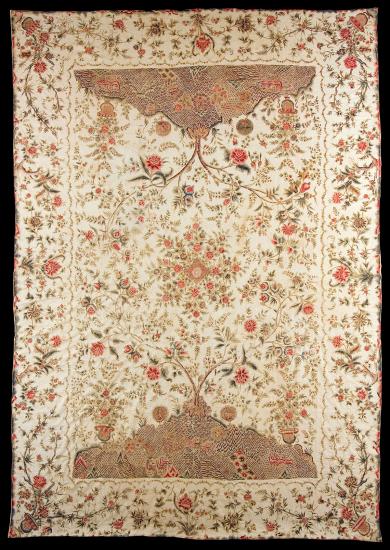
Indian palampores—printed and painted cotton textiles—were exported as part of a three-way trade. Europeans traded gold for them in India, then used them to obtain spices in the Molucca Islands. Palampores typically were designed with a tree of life as the central focus, framed by successive borders. All four corners of this palampore are printed with the name “I. Quane”; one corner also includes the stamp of the Dutch East India Company (in Dutch: Vereenigde Oost-Indische Compagnie, VOC, or "United East India Company").